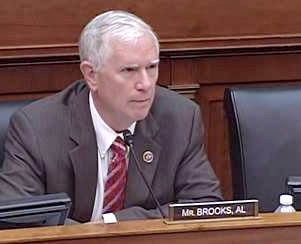By Jim Ellis — Wednesday, July 12, 2023
Senate
Indiana: Banks’ GOP Challenger May Be Out — Last week, egg farmer John Rust announced a challenge to Indiana Rep. Jim Banks (R-Columbia City) for the open GOP Senate nomination, but his quest might end before it even begins. This week, as the Daily Kos Elections site reports, we find that Rust may not qualify for the ballot because he is not in good standing as a Republican according to Hoosier State election procedure. Because Indiana is a non-party registration state, the GOP candidate qualification requirements include voting in the two most recent Republican primaries, or the approval of the individual’s local GOP county chair.
Rust last voted in the 2016 Republican primary but also participated in the 2012 Democratic primary. Jackson County Republican chair Amanda Lowery is quoted as saying she wants to speak with Rust before making a final determination regarding his qualification status. For his part, Rep. Banks is saying Rust is “a liberal Democrat trying to run in the GOP primary,” and therefore should not be awarded a ballot line.
House
CA-31: Rep. Grace Napolitano to Retire — Veteran Congresswoman Grace Napolitano (D-Norwalk), who first won her seat in the 1998 election, announced Monday that she will not seek re-election to a 14th term next November. Napolitano, now 86 years old, is the oldest member of the House. She becomes the 14th House member and 10th Democrat to not seek re-election next year, but only the second to outright retire. The remainder are all running for a different office. Napolitano’s retirement decision also creates the fourth open House seat in the California delegation.In her statement announcing her retirement, the congresswoman endorsed state Sen. Bob Archuleta (D-Norwalk) as her successor. Ironically, Sen. Archuleta, if elected to the House in 2024, would be, at the age of 79, the second-oldest freshman in American history. At a D+29 rating from the FiveThirtyEight data organization, the seat will not be competitive for a Republican candidate. Chances are high, however, that we would see another double-Democratic general election under California’s all-party top-two jungle primary system. The California qualifying election is scheduled for Super Tuesday, March 5, 2024.
MI-7: Ex-Sen. Tom Barrett (R) to Return — Former Michigan state Sen. Tom Barrett (R), who was considered at least a slight under-performer in the 2022 election against US Rep. Elissa Slotkin (D-Lansing) when losing 52-46 percent, announced he will return next year for another try. Since Rep. Slotkin is running for the state’s open Senate seat, the politically marginal 7th District will also be open. Last week, former state Sen. Curtis Heftel (D) announced his candidacy with Gov. Gretchen Whitmer’s (D) support. Heftel left the legislature to join Gov. Whitmer’s administration.
Neither man is expected to face much intra-party opposition, but the general election will be hotly contested. MI-7 is one of 20 US House districts where the FiveThirtyEight and Dave’s Redistricting App data organizations disagree over which party has the partisan edge. In this instance, 538 projects the 7th District as having a R+4 rating, while Dave’s App calculates a 49.3D – 47.9R partisan lean.
States
Idaho: Top-Four Primary Initiative Cleared for Signature Gathering — An organized group called Idahoans for Open Primaries has launched an initiative to transform the current Idaho partisan primary system into Alaska’s unique Top Four Primary, which includes a Ranked Choice Voting component for the general election. In the legislative session just concluded, a law was enacted banning Ranked Choice Voting in any Idaho election.
The initiative, if qualified and passed, would repeal the new RCV ban law and institute an all-party open primary where all candidates running for a particular office will compete to finish in the first four positions. All four would then advance into the general election. If no candidate receives majority support, Ranked Choice Voting would be implemented. In Alaska, the system has led to a Democrat winning the at-large congressional seat even though 60 percent of voters chose a Republican candidate in the open all-party primary.
Organizers are now cleared to begin gathering petition signatures. They must secure 63,000 valid Idaho registered voter signatures on or before May 1, 2024. Included in this number must be signatures from at least six percent of residents in 18 of the state’s 35 legislative districts.







